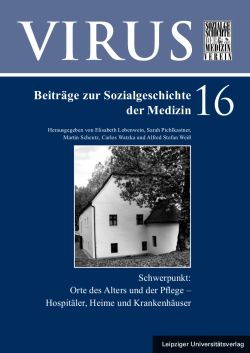
VIRUS Band 16, pp. 273-292, 2020/07/22
Schwerpunkt: Orte des Alters und der Pflege – Hospitäler, Heime und Krankenhäuser

Life, visit and work in old people’s and nursing homes is developed between individual needs and institutional requirements. (Socio)Demographic factors have led to a growing need for professional care and care for aging people. Processes of institutionalization and professionalization were and are the results. Led by the interest in mutual assistance and cooperation in Austrian old people’s and nursing homes I conducted qualitative interviews with the residents, their relatives and the nursing staff as well as the management of the homes in Styria and Vienna. Based on grounded theory a conditional structure emerged, which found its starting point in the historically grown framework conditions. The gap between the demands of medical care and life-world orientation is expressed in the current design of the areas of care, social contact, recreation, food and drink as well as spatial and material design. This contribution shows a historically grown “effect spiral” as a result.
Keywords: Grounded Theory approach, narrative interviews, old people’s and nursing homes, medical care, life-world orientation, Austria, historical impacts, current claims